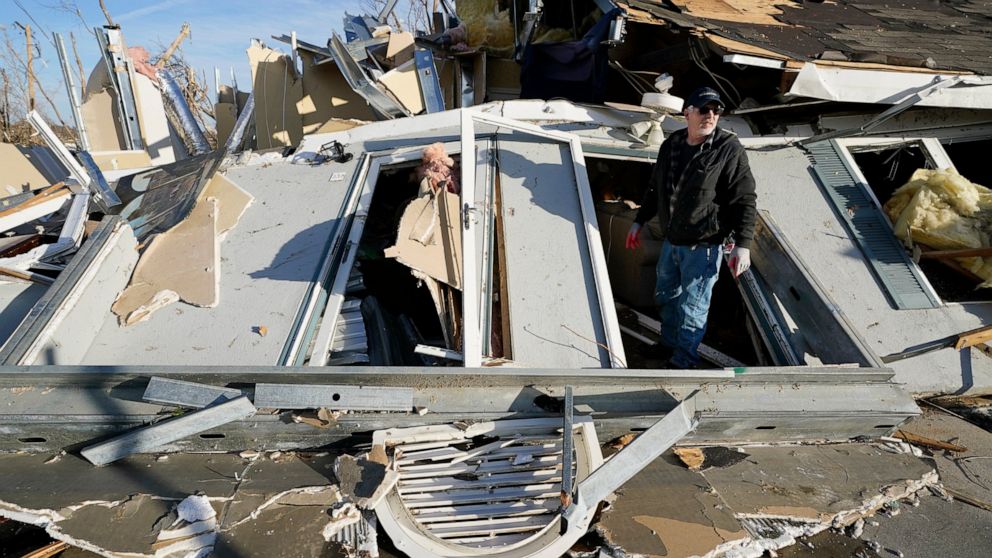
EXPLAINER: Was tornado outbreak related to climate change?
ABC News
Unusually warm temperatures and a storm system moving east linked to the La Nina weather pattern helped create the conditions necessary for the monstrous tornadoes and severe weather that tore through parts of the the Midwest and South
WASHINGTON -- The calendar said December but the warm moist air screamed of springtime. Add an eastbound storm front guided by a La Nina weather pattern into that mismatch and it spawned tornadoes that killed dozens over five U.S. states.
Tornadoes in December are unusual, but not unheard of. But the ferocity and path length of Friday night's tornadoes likely put them in a category of their own, meteorologists say. One of the twisters — if it is confirmed to have been just one — likely broke a nearly 100-year-old record for how long a tornado stayed on the ground in a path of destruction, experts said.
“One word: remarkable; unbelievable would be another,” said Northern Illinois University meteorology professor Victor Gensini. “It was really a late spring type of setup in in the middle of December.”
Warm weather was a crucial ingredient in this tornado outbreak, but whether climate change is a factor is not quite as clear, meteorologists say.
